Timothy Ferriss's Blog, page 119
February 24, 2012
The Top 10 Fiction Books for Non-Fiction Addicts

The dunes that inspired Dune: Agate beach sand dunes. (Photo: Kevin McNeal)
For a mere 20 years or so, I refused to read fiction. Read something that someone just made up? I can do that myself, thanks.
That was the attitude at least.
My time of reckoning came when I needed to fix insomnia, and non-fiction business books before bed just compounded the problem. I began reading fiction to "turn off" and instead saw breakthroughs in creativity and quality of life as a side-effect.
Now, if people ask me, for instance, "Which books should I read on leadership?", I might reply: "Dune and Ender's Game." I've come to look for practical solutions in both fiction and non-fiction.
For those of you who are stuck in the business or how-to sections, as I was for decades, I offer you 10 fiction books that might change how you view the world… and how you perform.
The Top 10
Listed in no particular order…
I have recommended this outstanding book before. It pits the instinctive against the intellectual, the simpleton (brilliant at times) against the over-thinker. Finding myself with my head frequently stuck up my own ass, this book is a constant companion and reminder to step outside of my brain.
Zorba himself would have you believe that words are wasteful and books a frivolous use of time (better spent dancing barefoot on the beach), but Zorba the Greek is stuffed like a grape leaf full of life-altering wisdom. For those looking to release the inner wild man, live each day in passionate awe, and reconnect with nature, Zorba reminds us how to live fully, love lasciviously and appreciate a life in the present tense.
I bought this book at Kinokuniya bookstore in Shinjuku, Tokyo. It is as thick as a Harry Potter book, probably thicker, but the pages are as thin as onion skin. It's a serious tome. I never expected to finish it, and I tore through it in less than two weeks.
If you're like me and enjoy a good Samurai story – the wandering ronin, epic battle scenes with lots of penetrating (wisdom), then you'll love Eiji Yoshikawa's Musashi. It's sold more than 100 million copies in Japanese. Musashi's transformation from talented yet conflicted young warrior to one of the greatest (perhaps the greatest) swordsman of all time teaches you about critical thinking, strategizing, and ultimately, that there is more to life than merely surviving. Musashi re-created himself from nothing and rose from destitution to legend.
Why not you?
Ever feel like you don't quite fit in? Don't want to follow society's silly rules?
Then you can probably relate to human-born and Martian-raised Valentine Michael Smith. In this controversial 1960's cult classic, Heinlein questions long held assumptions on religion, government, and sexuality (free Martian love for all!).
It's also where the term "grok" originated.
At one point, this was the only book listed on Mark Zuckerberg's Facebook page. If it's good enough to be the sole selection of the founder of Facebook, maybe there's something to it.
The plot: In anticipation of another attack from a hostile alien race, the search for a brilliant military strategist has led to Ender Wiggin.
In space combat school, Ender stands out, demonstrating exceptional leadership and unconventional strategy. But it is lonely at the top for Ender, as he struggles with relentless pressure from his instructors. Through Ender's journey, you'll learn how to capitalize on your strengths and those of your teammates, as well as exploit your adversaries' weaknesses. Ender is a futuristic Level 5 Leader we can all learn from.
Teaser: Drop kicks in zero gravity are the bomb. Trust me.
To check the power of a fast-rising duke, a space emperor executes a convoluted plan to gain control of the all-important planet that has a monopoly of The Spice (a super drug-cum-jet fuel). But wait! The duke's son is actually the messianic result of a breeding program run by space witches. Oh, and the Mentats? The coolest. If that all sounds like gibberish, don't despair. Dune presents, despite my synopsis, perhaps the most incredibly detailed and oddly believable fictional landscape I've ever encountered.
Also, to add to any confusion: walk without rhythm, and you won't attract the worm.
Completely unnecessary YouTube reference — Christopher Walken has rhythm:
After his girlfriend leaves him for another man, Rob embarks on a journey of self-discovery and evaluation by contacting ex-girlfriends to see what went wrong in each relationship. High Fidelity teaches us that eventually we all have to grow up, get past adolescent self-importance, and take responsibility for our own lives.
Who says I only like books with killing, aliens, and Greeks? I'm a sensitive guy .
7. The Brief Wondrous Life of Oscar Wao
Raised in a culture where men are powerful, sexual, and dominant, the Klingon-speaking, D&D-playing chubby boy thinks he'll never find true love or physical affection. Oscar struggles as a young immigrant from the Dominican Republic living with his older sister and mother in Paterson, New Jersey. A fun read with lots of geek culture, great history, and oh, it also won the Pulitzer Prize.
May the half-elves inherit the earth. Grey or Drow? Tough choice.
This classic work on state censorship remains as relevant in today's world of digital delights as it was when published in the black-and-white world of 1953.
In a futuristic American city, firefighter Guy Montag does not put out blazes; instead, he extinguishes knowledge and promotes ignorance by conducting state decreed book burnings. After an elderly woman chooses a fiery death with her books rather than a life without the written word, he begins questioning not only his profession, but also a society that allows itself to be lulled into complacency by constant exposure to state-controlled, mind-numbing television shows.
If you wonder why some people take censorship so seriously, this book will give you the answer. It's also a fantastically inspiring story of a one-versus-a-million fight that's worth fighting. Who knows when your turn will come?
9. A Hitchhikers Guide to the Galaxy
If Fear and Loathing in Las Vegas and Star Wars had a love-child, it would read something like this.
This colorful novel by Douglas Adams begins with Arthur Dent narrowly escaping the Earth's destruction as it is bulldozed to make room for a hyperspace bypass. Beyond the bizarre characters and plot twists, Adams proves that despite how bleak ones situation might be, there's always something to laugh about. Adam's Total Perspective Vortex is also considered to be a great Zen teaching tool, so if you're looking for the meaning of life, you might not be far from the answer here.
If you need humor to make the jump to fiction, this might be your gateway drug.
My mother and brother are, thankfully, book snobs. I mean this in the best way possible. Books take a lot of time, after all, and life is short. So when both my mom and broha simultaneously insisted that I read this book, I had to investigate.
A thriller about a detective with Tourette Syndrome? Sign me up. It's a hysterical romp through high-stakes problem-solving and old-fashioned crime fighting, all told through deliciously mind-tickling prose. One of my absolute favorites.
Zen school and cop tapping? Check and check.
###
Which one fiction book would you choose to convert a non-fiction devotee to the world of imagination?
February 20, 2012
Beyond X PRIZE: The 10 Best Crowdsourcing Tools and Technologies

Peter Diamandis explaining X PRIZE economics. (Photo: Hubert Burda)
Dr. Peter H. Diamandis is the Chairman and CEO of the X PRIZE Foundation, and co-Founder and Chairman of the Singularity University, a Silicon Valley based institution partnered with NASA, Google, Autodesk and Nokia. Dr. Diamandis attended MIT, where he received his degrees in molecular genetics and aerospace engineering, as well as Harvard Medical School where he received his M.D.
He's no underachiever.
I've known Peter for several years, both as a friend and as advising faculty at Singularity University. He is known for being incredibly resourceful. And, true as this may be, it's his ability to teach resourcefulness that impresses me most…
The following guest post offers an optimistic look at the tools and technologies he believes will change this world for the better, which you can harness. If you like this small sample and the resources at the end, I highly encourage you take a look at his new book on this subject, Abundance.
In it, Diamandis and co-author Kotler challenge us all to solve humanity's grand challenges. The timing is right; innovative small teams are now able to accomplish what only governments and large corporations could once fathom.
I hope this excites you as much as it excites me. With a little planning and a little technology, you–yes, you–can create a domino effect that changes the world.
Enter Peter
In 1861 William Russell, one of the biggest investors in the Pony Express, decided to use the previous year's presidential election for promotional purposes.
His goal was to deliver Abraham Lincoln's inaugural address from the eastern end of the telegraph line, located in Fort Kearny, Nebraska, to the western end of the telegraph line, in Fort Churchill, Nevada, as fast as possible. To pull this off, he spent a small fortune, hired hundreds of extra men, and positioned fresh relay horses every ten miles. As a result, California read Lincoln's words a blistering seventeen days and seven hours after he spoke them.
By comparison, in 2008 the entire country learned that Barack Obama had become the forty-fourth president of the United States the instant he was declared the winner. When Obama gave his inaugural address, his words traveled from Washington, DC, to Sacramento, California, 14,939,040 seconds faster than Lincoln's speech. But his words also hit Ulan Bator, Mongolia, and Karachi, Pakistan, less than a second later. In fact, barring some combination of precognition and global telepathy, this is just about the very fastest such information could possibly travel.
Such rapid progress becomes even more impressive when you consider that our species has been sending messages to one another for 150,000 years. While smoke signals were innovative, and air mail even more so, in the last century, we've gotten so good at this game that no matter the distances involved, and with little more than a smart phone and a Twitter account, anyone's words can reach everyone's screen in an instant. This can happen without additional expenses, extra employees, or a moment of pre- planning. It can happen whenever we please and why-ever we please. With an upgrade to a webcam and a laptop, it can happen live and in color. Heck, with the right equipment, it can even happen in 3-D.
This is yet another example of the self-amplifying, positive feedback loop that has been the hallmark of life for billions of years. From the mitochondria-enabled eukaryote to the mobile-phone-enabled Masai warrior, improved technology enables increasing specialization that leads to more opportunities for cooperation. It's a self-amplifying mechanism. In the same way that Moore's law is the result of faster computers being used to design the next generation of faster computers, the tools of cooperation always beget the next generation of tools of cooperation. Obama's speech went instantly global because, during the twentieth century, this same positive feedback loop reached an apex of sorts, producing the two most powerful cooperative tools the world has ever seen.
The first of these tools was the transportation revolution that brought us from beasts of burden to planes, trains, and automobiles in less than two hundred years. In that time, we built highways and skyways and, to borrow Thomas Friedman's phrase, "flattened the world." When famine struck the Sudan, Americans didn't hear about it years later. They got real-time reports and immediately decided to lend a hand. And because that hand could be lent via a C-130 Hercules transport plane rather than a guy on a horse, a whole lot of people went a lot less hungry in a hurry.
If you want to measure the change in cooperative capabilities illustrated here, you can start with the 18,800-fold increase in horsepower between a horse and a Hercules. Total carrying capacity over time is perhaps a better metric, and there the gains are larger. A horse can lug two hundred pounds more than thirty miles in a day, but a C-130 carries forty-two thousand pounds over eight thousand miles during those same twenty-four hours. This makes for a 56,000-fold improvement in our ability to cooperate with one another.
The second cooperative tool is the information and communication technology (ICT) revolution we've already documented. This has produced even larger gains during this same two-hundred-year period.
ICT's impact doesn't end with novel ways to spread information or share material resources. As Rob McEwen discovered when he went looking for gold in the hills of northwestern Ontario, the tools of cooperation can also create new possibilities for sharing mental resources—and this may be a far more significant boost for abundance.
Gold in Dem Hills
A dapper Canadian in his mid-fifties, Rob McEwen bought the disparate collection of gold mining companies known as Goldcorp in 1989. A decade later, he'd unified those companies and was ready for expansion—a process he wanted to start by building a new refinery. To determine exactly what size refinery to build, McEwen took the logical step of asking his geologists and engineers how much gold was hidden in his mine. No one knew. He was employing the very best people he could hire, yet none of them could answer his question.
About the same time, while attending an executive program at MIT's Sloan School of Management, McEwen heard about Linux. This open- source computer operating system got its start in 1991, when Linus Torvalds, then a twenty-one-year-old student at the University of Helsinki, Finland, posted a short message on Usenet:
I'm doing a (free) operating system (just a hobby, won't be big and professional like gnu) for 386(486) AT clones. This has been brewing since April, and is starting to get ready. I'd like any feedback on things people like/ dislike in minix…
So many people responded to his post that the first version of that operating system was completed in just three years. Linux 1.0 was made publicly available in March 1994, but this wasn't the end of the project. Afterward, support kept pouring in. And pouring in. In 2006 a study funded by the European Union put the redevelopment cost of Linux version 2.6.8 at $1.14 billion. By 2008, the revenue of all servers, desktops, and software packages running on Linux was $35.7 billion.
McEwen was astounded by all this. Linux has over ten thousand lines of code. He couldn't believe that hundreds of programmers could collaborate on a system so complex. He couldn't believe that most would do it for free. He returned to Goldcorp's offices with a wild idea: rather than ask his own engineers to estimate the amount of gold he had underground, he would take his company's most prized asset—the geological data normally locked in the safe—and make it freely available to the public. He also decided to incentivize the effort, trying to see if he could get Torvald's results in a com- pressed time period. In March 2000 McEwen announced the Goldcorp Challenge: "Show me where I can find the next six million ounces of gold, and I will pay you five hundred thousand dollars."
Over the next few months, Goldcorp received over 1,400 requests for its 400 megabytes of geological data. Ultimately, 125 teams entered the competition. A year later, it was over. Three teams were declared winners. Two were from New Zealand, one was from Russia. None had ever visited McEwen's mine. Yet so good had the tools of cooperation become and so ripe was our willingness to use them that by 2001, the gold pinpointed by these teams (at a cost of $500,000) was worth billions of dollars on the open market.
When McEwen couldn't determine the amount of ore he had under- ground, he was suffering from "knowledge scarcity." This is not an uncommon problem in our modern world. Yet the tools of cooperation have become so powerful that once properly incentivized, it's possible to bring the brightest minds to bear on the hardest problems. This is critical, as Sun Microsystems cofounder Bill Joy famously pointed out: "No matter who you are, most of the smartest people work for someone else."
Our new cooperative capabilities have given individuals the ability to understand and affect global issues as never before, changing both their sphere of caring and their sphere of influence by orders of magnitude. We can now work all day with our hands in California, yet spend our evenings lending our brains to Mongolia. NYU professor of communication Clay Shirky uses the term "cognitive surplus" to describe this process. He defines it as "the ability of the world's population to volunteer and to contribute and collaborate on large, sometimes global, projects."
"Wikipedia took one hundred million hours of volunteer time to create," says Shirky. "How do we measure this relative to other uses of time? Well, TV watching, which is the largest use of time, takes two hundred billion hours every year—in the US alone. To put this in perspective, we spend a Wikipedia worth of time every weekend in the US watching advertisements alone. If we were to forgo our television addiction for just one year, the world would have over a trillion hours of cognitive surplus to commit to share projects." Imagine what we could do for the world's grand challenges with a trillion hours of focused attention.
An Affordable Android
Until now, we've kept our examination of the tools of cooperation rooted in the past, but what's already been is no match for what's soon to arrive. It can be argued that because of the nonzero nature of information, the healthiest global economy is built upon the exchange of information. But this becomes possible only when our best information-sharing devices— specifically devices that are portable, affordable, and hooked up to the Internet—become globally available.
That problem has now been solved.
In early 2011, the Chinese firm Huawei unveiled an affordable $80 Android smart phone through Kenya's telecom titan Safaricom. In less than six months, sales skyrocketed past 350,000 handsets, an impressive figure for a country where 60 percent of the population lives on less than $2 a day. Even better than the price are the 300,000-plus apps these users can now access. And if that's not dramatic enough, in the fall of 2011 the Indian government partnered with the Canada-based company Datawind and announced a seven-inch Android tablet with a base cost of $35.
But here's the bigger kicker. Because information-spreading technology has traditionally been expensive, the ideas that have been quickest to spread have usually emerged from the wealthier, dominant powers—those nations with access to the latest and greatest technology. Yet because of the cost reductions associated with exponential price-performance curves, those rules are changing rapidly. Think about how this shift has impacted Hollywood. For most of the twentieth century, Tinseltown was the nexus of the entertainment world: the best films, the brightest stars, an entertainment hegemony unrivalled in history. But in less than twenty-five years, digital technology has rearranged these facts.
On average, Hollywood produces five hundred films per year and reaches a worldwide audience of 2.6 billion. If the average length of those films is two hours, then Hollywood produces one thousand hours of content per year. YouTube users, on the other hand, upload forty-eight hours' worth of videos every minute. This means, every twenty-one minutes, YouTube provides more novel entertainment than Hollywood does in twelve months. And the YouTube audience? In 2009 it received 129 million views a day, so in twenty-one days, the site reached more people than Hollywood does in a year. Since content creators in the developing world now outnumber content creators in the developed world, it's safe to say that the tools of cooperation have enabled the world's real silent majority to finally find its voice.
And that voice is being heard like never before. "The global deployment of ICT has utterly democratized the tools of cooperation," says Salim Ismail, SU's founding executive director and now its global ambassador. "We saw this in sharp relief during the Arab Spring. The aggregated self- publishing capabilities of the everyman enabled radical transparency and transformed the political landscape. As more and more people learn how to use these tools, they'll quickly start applying them to all sorts of grand challenges."
Resources and Next Steps
This is where you come in.
All of these cooperative tools and exponential technologies are reshaping our globe. But you no longer have to sit on the sidelines and wait for the future to happen. You are now empowered to get involved. To change the world. If you're sick of the doom and gloom and ready to get in the game, explore the resources below. If you feel inspired to delve deeper, the Abundance book offers many more options.
Today's 10 best crowdsourcing and collaboration tools on the web:
So given these powerful tools of collaboration, how do you use them to solve your corporate challenges? Here's a few of the cutting edge organizations that have been created to help you.
1. X PRIZE Foundation (www.xprize.org): The X PRIZE focuses on designing and running incentive competitions in the $1M – $30M arena focused on solving grand challenges.
2. CoFundos (cofundos.org): cheap and really good platform for the development of open-source software.
3. Genius Rocket (geniusrocket.com): solid crowdsourced creative design agency composed solely of vetted video production professionals producing content as a fraction of the cost of a traditional ad agency.
4. Amazon Mechanical Turk (mturk.com): popular and powerful crowdsourcing platform for simple tasks that computers cannot perform(yet), such as podcasts transcribing or text editing. There are also companies, like CrowdFlower, that leverage Mechanical Turk (and similar tools) for even more elegant solutions.
5. Innocentive (www.innocentive.com): one of today's best online platform for open innovation, crowdsourcing and innovation contests. This is where organizations access the world's brightest problem solvers.
6. UTest (http://www.utest.com): the world's largest marketplace for software testing services.
7. IdeaConnection (www.ideaconnection.com): open innovation challenge site for new inventions, innovations and products.
8. NineSigma (www.ninesigma.com): open innovation service provider, connecting clients with a global innovation network of experts.
9. Ennovent (www.ennovent.com): worldwide expert platform seeking solutions for sustainable development in energy, food, water, health and education in rural India.
10. TopCoder (www.topcoder.com): the world's largest competitive software development & creative design community, with over 200,000 at your fingertips.
Today's best crowd-funding tools on the web:
In addition to getting people to help solve your problems, what about getting people to help fund your work? Here's a few of the key sites that can help you raise money:
1. CrowdRise (www.crowdrise.com): Crowdrise is an innovative, crowd-sourced community of volunteers and online fundraisers that have come together to support online fundraising for charity, events and special projects. It's a way to raise money in new ways, turning participants and supporters into effective online fundraisers.
2. Kickstarter (www.Kickstarter.com): Kickstarter is the world's largest funding platform for creative projects. In 2011 the platform raised over $100 million for projects from the worlds of music, film, art, technology, design, food, publishing and other creative fields. Uniquely, on Kickstarter, a project must reach its funding goal before time runs out or no money changes hands, it's an "all or nothing model".
3. IndieGoGo (www.indiegogo.com): IndieGoGo you can create a funding campaign to raise money quickly and securely. This trusted platform has helped to raise millions of dollars for over 65,000 campaigns, across 211 countries.







February 15, 2012
Paulo Coelho: How I Write

Paulo Coelho (Photo: Philip Volsem)
Paulo Coelho has long been one of my writing inspirations.
His work, of near universal appeal, spans from The Alchemist to the most recent Aleph and has been translated into more than 70 languages.
Few people know that The Alchemist, which has sold more than 65 million copies worldwide, was originally published by a small Brazilian publisher to the tune of… 900 copies. They declined to reprint it. It wasn't until after his subsequent novel (Brida) that The Alchemist was revived and took off.
I, for one, have always been impressed with consistent writers. Paulo, who averages one book every two years, is staggeringly consistent. As I type this, I am under the pressure of book deadlines and often feel as Kurt Vonnegut did: "When I write, I feel like an armless, legless man with a crayon in his mouth."
My output is erratic at best, and I wondered: how does Paulo write? What is his process? How does he think about it?
I reached out to him, and he was kind enough to reply with the attached/linked audio. In it, he provides some gems and answers the following questions, which I posed to him (I provide my own abbreviated answers in brackets):
- When on deadline, what is the first thing you do in the morning? What does your daily schedule look like? Do you take any days off, and what determines if you've had a "successful" writing day?
[TIM: 2-3 hours of fasted writing in the morning to Mozart and pu-ehr tea. Success is two shitty pages of drafts.]
- How do you capture ideas that might be helpful in your writing? These days, what software and tools do you use for writing?
[TIM: Evernote, Moleskine notebooks]
- How much of your books do you visualize/outline upfront vs. writing organically piece-by-piece? In other words, how much of the story arc have you decided before you start writing? Let's take two books as examples — The Alchemist and Aleph. Otherwise, how did your process differ for these two books?
[TIM: Though it changes as I write, I outline everything before starting. I suspect organic writing is more common in fiction.]
- What are the most common mistakes that you see first-time novelists making? Most common weaknesses?
[TIM: NA]
- Do you base your characters on real people? Why or why not? If not, how do you develop those characters?
[TIM: NA]
- What are the 2-3 things you personally find most invigorating or helpful when you're stuck or feel stagnated with writing/ideas? Do you have a team of any type (researchers, etc.) who help you?
[TIM: Rereading Bird by Bird when I doubt/loathe/chastise myself, deadlifting, and doing sprint workouts.]
Tim Ferriss – Paulo Coelho by Tim Ferriss
Paulo offered a few additional notes and resources further exploration:
As for the sentence in Alice in Wonderland: "Begin at the beginning," the King said gravely, "and go on till you come to the end: then stop."
Three podcasts on his writing process:
1) On writing I http://youtu.be/vKBOKLF3Ul8
2) On writing II – the puzzle http://youtu.be/3_TJ4MIGeg8
3) Inspiration http://youtu.be/VWRmbSgS2Yw
For more musings, see Paulo's Facebook fan page, with almost 8,000,000 fans (!)
###
If you write, what have you found most helpful for the first and last questions? Here they are, and I'd love your thoughts in the comments:
- When on deadline, what is the first thing you do in the morning? What does your daily schedule look like? Do you take any days off, and what determines if you've had a "successful" writing day?
- What are the 2-3 things you personally find most invigorating or helpful when you're stuck or feel stagnated with writing/ideas? Do you have a team of any type (researchers, etc.) who help you?
###
Odds and Ends: Shorty Awards
A few readers have kindly nominated me to win the "blogger" category for The Shorty Awards. I figure, if I'm in the game, I might as well try and win it! If you like this blog (300+ posts since 2007), please consider taking a second to . Thank you!







January 29, 2012
Housecleaning: Be Featured in The 4-Hour Chef, Random Links, and Contest Updates

Hanoi toddler and b-boy, from a trip Ma.tt and I took in 2009. (Photo: Matt Mullenweg)
The next post will be an interview on writing process with the inimitable Paulo Coelho, author of The Alchemist and Aleph, among many others. His work been translated into 71 languages.
In the meantime, I'd like make a few offers and provide a few updates, as well as a few reading links:
1) Would you like to be in The 4-Hour Chef? I'd love for you to be.
Amazingly, it hit both #1 and #2 (for Kindle version) in cookbooks on Amazon when it was announced, and I think it could be bigger than the last two books. If you've had success on The Slow-Carb Diet™, have any before/after pics, and would like to be featured in the book, please click here!
2) Random articles from around the web that readers of this blog might enjoy (or find amusing):
- IBM Worker Email-Free for 4 Years: How to Live without Email
- Interview on travel for the BBC – Tim Ferriss: Forms of Identification
- SF Chronicle interview – Tim Ferriss has strong likes: knives, kettlebells
- Volkswagen turns off Blackberry email after work hours
3) The winner of the free roundtrip anywhere in the world, a prize from the Christmas Countdown experiment (intermittent fasting, plus training), is Daniel Kislyuk! There were some fantastic self-trackers, but Daniel gave constant status updates and then wrapped up with a summary post. Daniel, please keep an eye on your e-mail for a note from Amy.
4) For the trip to SF for all-day training with Chip Conley, I'll let Chip deliver the message himself:
Surprise + Joy = Elation. That's my new Emotional Equation of the day. Wow, I'm elated by the response to my guest blog and how many insightful entries were submitted. Thank you so much for diving into the deep end of the emotional swimming hole with me. It seems like this book is made for these times. The more externally chaotic the world, the more we yearn for some kind of internal logic.
There were 7 entries (of the first 100 submitted, although I did read every single one of the almost 500) that deserved extra recognition. I will give an Honorable Mention to Divya (1/19 at 7:03 am), Eric Sigfried (1/19 at 8:52 am), Marcus (1/19 at 9:18 am), Susan Dupre (1/19 at 10:19 am) and Ryan (1/19 at 10:50 am).
We have a runner-up whose dissection and use of the Anxiety Balance Sheet impressed me, and that's Ryan Riegner (1/19 at 9:22 am). Ryan, I believe you live in the NYC area and I'll be there from Feb 19-25 for a book launch party and media tour. I would like to invite you out to a meal with me while I'm in town. This wasn't planned to be an extra prize, but your response deserves it. And, our winner is Diego Velasquez (1/19 at 7:54 am) who will be flying out to SF to stay at our luxurious Hotel Vitale for a couple of nights and spend a day learning what it means to be a Chief Emotions Officer. For those who'd like to continue to learn more about Emotional Equations, check out our DIY contest on the Emotional Equations Facebook page, as it gives you another shot at a trip to SF and dinner with me.
Thanks once again for the phenomenal efforts and I hope you enjoy the book if you read it!







January 19, 2012
How to Become an Effective CEO: Chief Emotions Officer
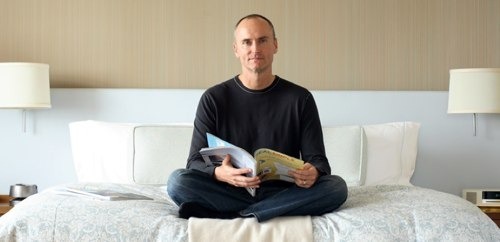
Chip Conley, founder of Joie de Vivre Hotels
Chip Conley is the founder of Joie de Vivre Hospitality, which he began at age 26 and built to more than 30 properties in California alone. In 2010, Joie de Vivre was awarded the #1 customer service award in the U.S. by Market Metrix (Upper Upscale hotel category).
Conley has also been named the "Most Innovative CEO" in the Bay Area by the San Francisco Business Times, and I'm proud to call him a friend.
We've shared many glasses of wine together. He doesn't know what I'm about to tell you, but it's true (Hi, Chip!). When we first met, and after reading his first book on Maslow's hierarchy of needs, I wondered "Is this Chip dude for real? Implementing self-actualization in a company?!?" My curiosity drove me to visit a few of his hotels, including Hotel Vitale, where I eventually concluded: these are the happiest employees I've ever met.
He has figured out what makes people tick.
The following post is a guest post by Chip and based on his new book, Emotional Equations. Be sure to read to the end, as there is a chance to win an expense-paid trip to SF to spend an entire day training with him.
Deal-making? Empire building? Self-fulfillment? He's your guy.
Enjoy…
Enter Chip Conley
I graduated from Stanford Business School at age 23 with Seth Godin.
I remember talking with him and others about my aspirations as an entrepreneur and my desire to become a CEO some day. Back then, I thought in order to become a successful CEO, I would need to become superhuman, leaping tall buildings in a single bound. But, after 24 years of being a CEO (I founded Joie de Vivre Hospitality, what's become the 2nd largest boutique hotelier in the world, and sold a majority interest to a billionaire in 2010), I've come to realize that the best business leaders aren't superhuman, they're simply super humans as they've learned how to become Chief Emotions Officers.
Chief Emotional Officer?
Leaders are the "emotional thermostats" of the groups they lead. If you want to dig into the support for this, read this compelling piece by Daniel Goleman, the man who popularized the idea of "emotional intelligence" in the 90s and proved that 2/3 of the effectiveness of business leaders comes from their EQ rather than their IQ or level of work experience.
There are multiple metaphors I use to describe how emotions work in our lives. One that feels very familiar to me is baggage. Our luggage in life is an apt metaphor for me – a guy who's been a hotelier for a quarter century. Countless times I've seen people show up at our hotel front desks with all kinds of baggage, and only some of it the physical kind. Most of us have emotional baggage that may seem invisible to the untrained eye or invisible to the person carrying the baggage. But the results of lugging that baggage around for years is noticeable in how that person shows up at the metaphorical front desk of life. If you are a Chief Emotions Officer, you are more aware of all the bags you're carrying and how to open your luggage up and make sense of what's inside.
Opening up a bag, you may find a truly messy interior with things in complete disarray. But, these emotional equations create a certain logic to how you pack and unpack your bags and, in fact, being a little more conscious of what's in your bag may allow you to discard a few heavy items that have been weighing you down. Creating your own internal logic regarding your emotional baggage will allow you to carry a lighter bag…one that's eminently easier to unpack.
4 Emotions to Unpack
We're going to focus on four emotions that you can start unpacking (i.e. mastering).
Think of emotions as existing on a color wheel. Isaac Newton created the color wheel long ago and helped us understand that red plus blue equals purple, for instance. I learned in my research for Emotional Equations – which allowed me to spend a couple of years with some of the world's psychology luminaries – that there's an emotional wheel with primary and secondary emotions: the Plutchik wheel. In my book, I evolve this wheel further so you can imagine that Disappointment + a Sense of Responsibility = Regret. And, once you understand the emotional building blocks of Regret, you can turn it from a downer into a lesson. Regret teaches. Fear protects. Sadness releases. Joy uplifts. Empathy unites. Think of your emotions as messages that give you the freedom, rather than the obligation, to respond. One of my favorite quotes of all time comes from Viktor Frankl, author of Man's Search for Meaning:
"Between stimulus and response there is a space. In that space is our power to choose our response. In our response lies our growth and our freedom."
Now, let's unpack and master the emotions of Despair, Happiness, Anxiety, and Curiosity.
DESPAIR = SUFFERING – MEANING
I am very proud of this equation.
It's the one that started my exploration of emotions through the lens of equations. I took Viktor Frankl's book and distilled it down to this useful mantra at a time in my life in 2008, when I had a series of friends commit suicide, had a flatline experience myself while giving a speech in St. Louis (literally: my heart stopped, and I dropped), and the rest of my life felt in disarray. If you consider the words "despair" and "meaning" to be abstract or off-putting, consider "sadness" as a tamer version of despair or "learning" as a more concrete version of meaning.
First off, in order for the math to work, "suffering" has to be a constant. This is the first Noble Truth of Buddhism, but it's also true, and not just in a recession. You can always find the suffering if you want to look for it. I had no idea when I started writing this book that this decade would come to resemble the 1930s in that our near Depression-like economic conditions would persist as long as they have. But while the Depression was a very difficult time for so many people, interview-based research studies show that it indirectly prepared young women for losing their husbands later in life. These women learned self-reliance, independence, and courage early in life, which served them (and perhaps saved their families) when their husbands passed.
So, consider "meaning" in the following way: many of us go to the gym to exercise our physical muscles to ensure that our physical body doesn't bloat or atrophy. If you're going through a difficult time right now, maybe – unwittingly – you've signed up for emotional boot camp and you're being asked to exercise emotional muscles that haven't had this kind of workout for years. But, this isn't meant to be just agony. It's meant to prepare you for later in life. The emotions you may be mastering today – humility, resilience, persistence, a sense of humor – will serve you well at some later point in your life, maybe in the not too distant future.
For me, having my long-term relationship end in the midst of my train wreck of a life in 2009 was the last thing I was looking for. Suffering felt ever-present, like the fog during a San Francisco summer. The foghorn that cut through this opaque time was the question I asked myself on my most sad, self-pitying days, "How is this experience going to serve me in my next relationship? How is this going to make me a better partner when I find my true soul mate?"
These weren't easy questions to ask when I felt radioactive and couldn't imagine anyone loving me again. But I kept the exercise metaphor in mind. The fact that I could joke with friends about my emotional boot camp helped me realize that great rewards – or meaning – could arise as a result of this painful experience. So, just know that there are fruits to gather in the valley of Despair.
HAPPINESS = WANTING WHAT YOU HAVE / HAVING WHAT YOU WANT
People often have a love-hate relationship with this equation. The proper definitions of the numerator and denominator are what create the magic. "Wanting what you have" can be translated into "practicing gratitude," having a reverence for what is working in your life. The more tricky definition is in the bottom of this equation. To "have what you want" is an act of "pursuing gratification." I want something and it's my job to go out and pursue it or "have" it in order to satisfy that want.
Don't get me wrong. The act of pursuing something can bring us a sense of accomplishment and take us into that focused "flow" state. But, the risk is that "chasing something with hostility" (some dictionaries' definition of "pursuit") or even with just focused attention can completely distract you from what's in the numerator, what you already have. Socrates said it best, "He who is not contented with what he has would not be contented with what he would like to have."
As a type-A guy who's spent more than my share of time on the hedonic treadmill, I can tell you that it's very difficult to simultaneously practice gratitude while also pursuing gratification. Some mystics are able to take the bottom of this equation down to zero, which may give them infinite happiness. But, for the rest of us mere mortals, the risk is not in lack of pursuit, as this is part of what modern society demands of us. The risk is that we completely diminish the power of gratitude.
So, the true power of this equation is in keeping your attention on the numerator.
Someone once said to me that feeling gratitude without sharing it with someone is like wrapping a present without giving it to the intended recipient. So, what are the ways you can show your gratitude in such a fashion that it becomes a habit or practice for you that's ingrained in your everyday life? For me, I needed to start by having it on my conscious "to-do" list each day. I had a rule that I had to give two face-to-face expressions of gratitude each day at work, preferably to someone who found the thank you unexpected. In fact, I wrote about this in the Huffington Post after one of my recent trips to Bali. What if you thought of your expressions of gratitude like a devotional daily offering?
Let me give you a suggestion about a Gratitude Journal as well. They're not for everyone, just like personal journals resonate with some while repelling others. The purpose of a Gratitude Journal is to help you be conscious about "wanting what you have." An alternative means of accomplishing this purpose is to have a Gratitude Buddy. Make it a point to meet with your Buddy once a month (or more frequently if you wish) in a location where there are no distractions and ask each other, "What gifts do you have in your life that are easy to take for granted?" and "What was a recent gift that may have been wrapped up as a pain or punishment?"
For those of you who'd like to explore this equation a little further, I have two suggestions.
1. Check out a research article by Jeff T. Larsen and Amie R. McKibban where they literally put this equation to the test (with inconclusive results, but really interesting findings).
2. Watch my 2010 TED talk, in which I share my key learning from my trip to Bhutan to study their Gross National Happiness Index.
ANXIETY = UNCERTAINTY x POWERLESSNESS
After reading more than a dozen books and 50 research studies on anxiety, I was struck by the fact that 95% of the causes of anxiety seemed to be distilled down to what we don't know and what we can't control. You may have heard of the study that demonstrated most people would prefer receiving an electric shock now that's twice as painful as receiving some random shock in the next 24 hours. This is why, as leaders, we need to recognize that hiding the truth, especially when it's going to come out at some point in the near future, is a futile mistake that can often just increase the amount of anxiety your employees are feeling.
If we know that the combustible product of uncertainty and powerlessness creates anxiety, we can create what I call an Anxiety Balance Sheet to turn this around. Take out a piece of paper and create four columns. Then, think of something that is currently making you anxious. Regarding that subject, the first column is "What Do I Know" about this issue. The second column is "What Don't I Know." The third column is "What Can I Influence." The fourth column is "What Can't I Influence." Spend enough time doing this so that you have at least one item per column but you may find that you have a half-dozen items in some columns.
After you feel complete, what do you notice with respect to the four columns? About 80% of the people I've worked this through with are surprised that they have more items listed in columns one and three (the "good" columns) than they do in columns two and four. The reality is that when something is making us anxious, we tend to fixate on those elements of the problem that feel mysterious (what we don't know) or uncontrollable (what we can't influence). So, there's some liberation in just outlining what's making you crazy and realizing that there may be many balancing positives to those issues that are vexing you.
Now, spend some time reviewing the items in column two (what you don't know). Is there someone you can ask – your boss, your boyfriend, your doctor – who can help you with some needed information that will move this item from column two to column one? Maybe it's just doing a Google search? I know it's scary to ask your boss whether your job is in jeopardy, but remember the electric shock example I mentioned earlier. Anxiety can be more painful and debilitating than bad news. Now look at column four and truly ask yourself, "Are you completely powerless about the items on this list?" I've found that having a smart friend sit with me can sometimes help me uncover ways to move items from column four to column three.
In sum, just the act of unpacking your anxiety bag and knowing what's inside can have a profound effect on reducing your fear of the future.
CURIOSITY = WONDER + AWE
We've had a subtraction, a division, and a multiplication equation so far. Now, we'll finish with an addition equation around the experience of curiosity. Recent studies have shown that curiosity is one of the most valuable emotional qualities people can leverage during periods of crisis. Fear and most negative emotions train us to narrow our scope. "Fight or flight" reactions are evolution's means of helping us avert danger. But, oftentimes, we need to move from narrowing our attention to the "broaden and build" way of thinking that Barbara Fredrickson talks about in her book on Positivity. Getting through your own emotional recession may require bigger thinking rather than narrow execution.
When you're living in a place of fear, it is hard to be curious. But, I've found that so much of it comes back to defusing my natural tendency toward reactivity. In other words, it's learning to pause. Curiosity is not a reactive emotion. It's one that takes a certain amount of reflection and a willingness to admit what you don't know. So, ask yourself, "What habitats allow me to be more curious?" I first had to make a list of which habitats made be less curious: the office, any conference room, investor meetings, and spending time with people who I wanted to impress.
So, I knew that these were not places that were going to help me stoke up bigger thinking. Ironically, when I made my list of curious habitats, I found my list to be longer than I expected: anywhere in nature but especially near a beach with crashing surf; hanging out with kids; museums or other experimental spaces with art; zoos; places with a big night sky and lots of stars; my backyard cottage; and any place where I felt comfortable laughing from my gut (it's hard to be full of humor and full of fear at the same time).
As I've gotten older, I've found that seeking the sacred in life opens up my sense of awe and my ability to connect with curiosity.
I've recently made a decision to seek out a sacred festival somewhere in the world each quarter as a means of committing to finding habitats for curiosity. As Tim F. knows (he was a fellow citizen of my camp Maslowtopia), I've been an aficionado of Burning Man for many years and some of my best business ideas have come out of my time in the desert marveling at transcendent art and having non-linear conversations.
So, if you're feeling "on empty" creatively, know that curiosity is the fuel you need to seek. In author Liz Gilbert's 2009 TED talk (TED is another habitat for curiosity), she shares the fact that the genesis of the word "genius" comes from "genie" and that the most creative people in the world are able to become vessels for the genie to inhabit them. My experience is that these genies prefer inhabiting curious places in the world and that's where they're most likely to tap you on your shoulder and give you the gift of inspiration that may change your life.
In sum, the more the external world becomes chaotic, the more we rely upon internal logic. This was true in the 1930s when Nazism and political and religious fundamentalism rose. But, that decade also sprouted new thinking from people like Norman Vincent Peale, Dale Carnegie, Napoleon Hill, Viktor Frankl, and Reinhold Niebuhr (who created the Serenity Prayer).
I hope that you find these emotional equations help you to think differently, live better, and truly become the Chief Emotions Officer of your own life. It's worth the introspection.
—
TIM:
Chip is offering an exclusive to readers of this blog: the chance to spend a full day with him in San Francisco.
He'll cover economy airfare from anywhere in the US (if you're international, you'll need to get yourself to the US), and he'll also cover two nights at Hotel Vitale on the water, or the best alternative if they're sold out. The usual legal stuff applies: must be older than 18, void where prohibited, no purchase required to enter, etc.
No later than this Friday (1/20/12) at 5pm PST, leave a comment below and answer the following, in order, and in no more than 300 words:
1. What is your favorite inspirational or philosophical quote?
2. How could you apply one of the equations in this post to your life for maximum benefit?
3. What would you like to change or build after a day with Chip in SF?
Only the first 100 entrants are eligible, so the earlier the better!
###
Odds and Ends: The Crunchies, Winners, and More
The Crunchies, something like the tech Oscars, are currently in the finals, and quite a few of my start-ups have made the cut (I'm honored to be involved with all of them). If you like these products or people, please click through to give them a vote! All of the candidates, many of them friends, are outstanding.
CEO of the Year – Phil Libin (Evernote) and Dick Costolo (Twitter)
Angel of the Year – these folks are all incredible, but I have to vote for my man, Kevin Rose.
Founder of the Year – Leah Busque (TaskRabbit) For the story of how Leah and I met, as well as how she got me to be an advisor, see this article: "How to Turn $750 into $1,000,000″
Best Tablet App – StumbleUpon
Best Mobile App – Evernote and Taskrabbit
Best Location App – Uber (check out the San Francisco grid)
For all of the categories and finalists, go here.







January 8, 2012
Tim Ferriss Getting His Ass Kicked + How to Survive a Physical Attack (Video Series)
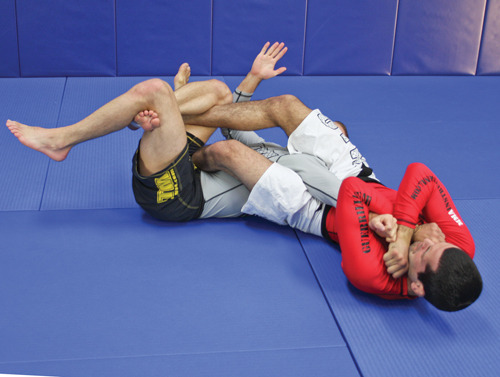
This post might seem odd, as it starts with a random sequence from a random skill. There are three reasons for this:
1) I like to expose readers to things they've never explored.
2) The best long-term policy for keeping a blog fun to read (and write) is to cover things that subsets of your readers love, not things that everyone merely likes.
3) I think all of you should know how to respond to a real physical attack.
Keeping these in mind, I hope you enjoy a lil' taste of Brazilian Jiu-Jitsu, often nicknamed "human chess."
If it's not your thing, I still suggest you skip to the end, where you can see the free (and short) video series I did with Dave Camarillo on defending against real-world attacks of various types. I had these videos up at one time in 2007, but the code became corrupted, so I'm updating them here.
One of the last videos is of me getting thrown on my head, or heels-over-head, repeatedly.
Enter Dave Camarillo
Since the Ultimate Fighting Championship (UFC) came to prominence in 2005, Brazilian Jiu-Jitsu (BJJ) has been the most sought-after skill-set in the marital arts world. There are many world-class athletes, but there are only a few world-class teachers. Dave Camarillo, who's coached UFC fighters like Cain Velasquez, is one of them…
I've known Dave for nearly a decade and trained with him at AKA in San Jose, CA. I also had the chance to be a crash-test dummy for his new book, Submit Everyone, which is the book I always wanted him to write. It is (finally) a principle-based system for learning submissions and game strategy, as opposed to a hodge-podge of random techniques. Dave, though he'd never admit it, used to teach chess in addition to BJJ. It comes through and, as of this writing, his book has 100% 5-star reviews on Amazon.
For grappling fans, the below pass will give you a submission to try at your next practice. This scenario comes up a lot on the mats.
PASSING: NEGATIVE SIT-UP PASS TO ARMBAR
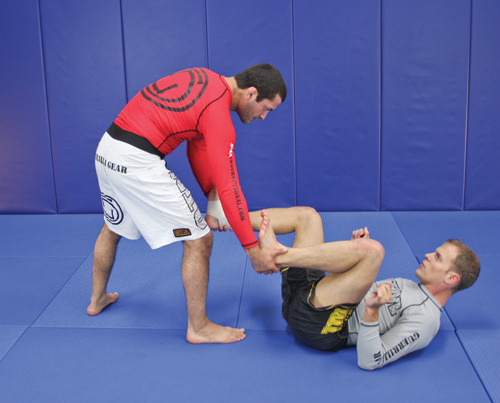
PHOTO 1: SUBJECT CAMARILLO is approaching the open guard of CONTACT FERRISS, TIMOTHY. As always, Camarillo does not delay in establishing control of Ferriss's heels. At this point, Ferriss is focused solely on defending these grips and has been momentarily taken out of his previous mindset.
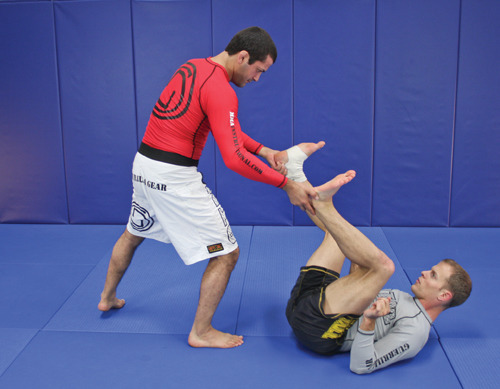
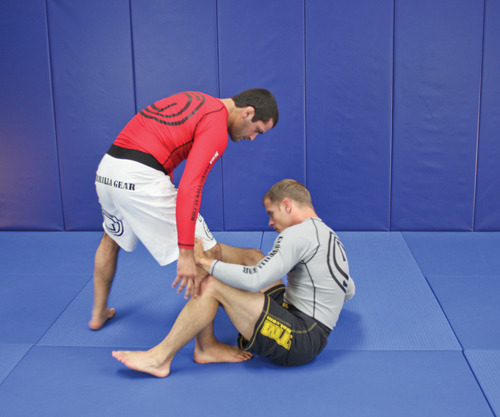

PHOTOS 2-4: Without delay, Camarillo pushes Ferriss's legs overhead and waits for him to rock back in defense. As Ferriss falls into the first trap, Camarillo steps inside of his seated guard. Ferriss does not wait and grabs the single-leg to gain advantage and attack.
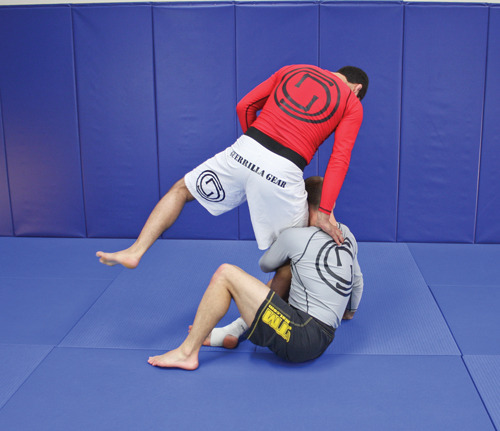
PHOTO 5: However, Camarillo realizes that the single-leg is the most common reaction and is already cross-stepping backward with his left leg before Ferriss can execute a sweep or takedown. Due to his perfect timing, Camarillo does not have to wait for Ferriss to establish a stronger defense of the backward cross-step.
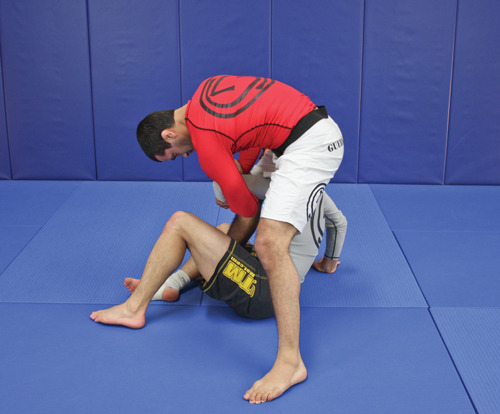
PHOTO 6: Having reached Ferriss's left side, Camarillo now focuses on the arm by securing a figure-four kimura lock on Ferriss's exposed (from holding the single-leg) left arm. [TIM: See third pic here for hand position] Camarillo's right leg is still technically inside of the guard, but Camarillo has little concern for it; he is completely focused on the finish.
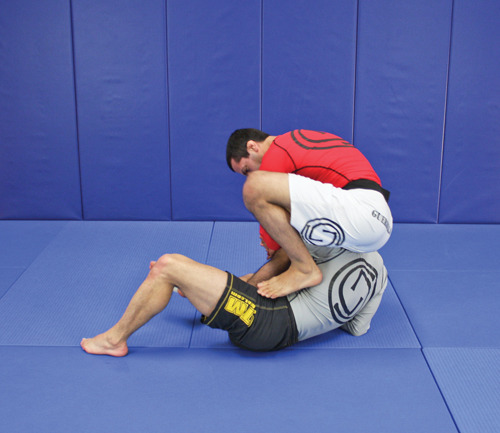
PHOTO 7: To break Ferriss's posture and initiate the final sequence, Camarillo jumps his left foot to Ferriss's left hip and sits down onto Ferriss's left shoulder. This collapses Ferriss toward the mat and sets him up for the submission.
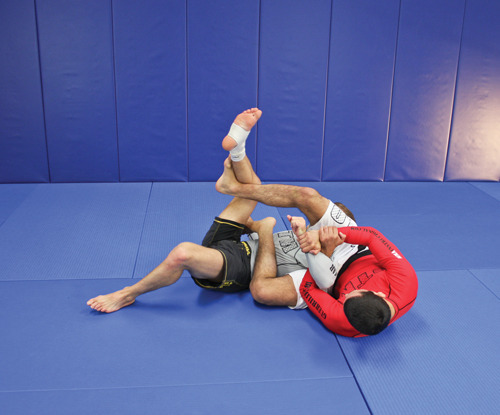
PHOTO 8: As Camarillo falls to his back, he slides a belt line hook with his left leg and uses his right foot as a hook to steer Ferriss away from his trapped arm. This keeps Ferriss planted to his back where it is far more difficult to defend.

PHOTO 9: Ferriss locks the triangle on Camarillo's right leg, but it does not matter. Camarillo's right leg blocks Ferriss's right arm from making a proper defense and his triangle makes it impossible to roll to either side to escape.
Camarillo stretches Ferriss's arm for the finish.
The Videos
First, before the instructionals, here is me getting thrown over and over again. I did this video to illustrate the importance knowing how to fall (ukemi) without getting injured. The music is a bit loud:
The instructionals follow. If you want to skip around, they cover, in order: punch defense, choke defense, bottom defense, and bottom defense/offense. Women should focus on the latter three, especially the last two.
Originally filmed in 2007, most take place at AKA in San Jose, where Dave coached at the time:







January 1, 2012
No Brown M&M's! David Lee Roth and the Power of Checklists
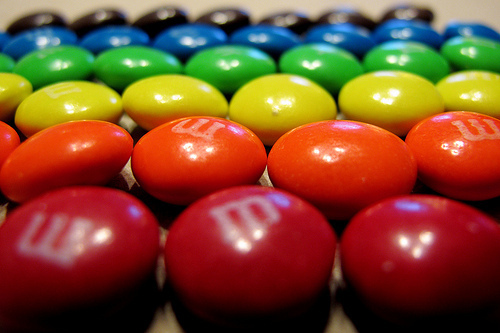
Article 126: No brown M&M's! (Photo: Mr. T in DC)
Happy New Year, all! I'll be putting up a "Lessons learned in 2011″ post soon. In the meantime, here is a taste of things to come.
###
I can come across as anal retentive, even severely Monk-ish. One reason for the madness: with rare exceptions, I've come to believe that how we do anything is how we do everything.
I'm not alone.
The following is a short excerpt from The Checklist Manifesto by Atul Gawande, also reprinted by Tehelka magazine in India. In it, we learn the logic of David Lee Roth's famous obsession with brown M&M's:
Listening to the radio, I heard the story behind rocker David Lee Roth's notorious insistence that Van Halen's contracts with concert promoters contain a clause specifying that a bowl of M&M's has to be provided backstage, but with every single brown candy removed, upon pain of forfeiture of the show, with full compensation to the band. And at least once, Van Halen followed through, peremptorily cancelling a show in Colorado when Roth found some brown M&M's in his dressing room. This turned out to be, however, not another example of the insane demands of power-mad celebrities but an ingenious ruse.
As Roth explained in his memoir, Crazy from the Heat, "Van Halen was the first band to take huge productions into tertiary, thirdlevel markets.
We'd pull up with nine 18-wheeler trucks, full of gear, where the standard was three trucks, max. And there were many, many technical errors — whether it was the girders couldn't support the weight, or the flooring would sink in, or the doors weren't big enough to move thegear through. The contract rider read like a version of the Chinese Yellow Pages because there was so much equipment, and so many human beings to make it function." So just as a little test, buried somewhere in the middle of the rider, would be article 126, the no-brown-M&M's clause. "When I would walk backstage, if I saw a brown M&M in that bowl," he wrote, "well, we'd line-check the entire production. Guaranteed you're going to arrive at a technical error… Guaranteed you'd run into a problem." These weren't trifles, the radio story pointed out. The mistakes could be lifethreatening. In Colorado, the band found the local promoters had failed to read the weight requirements and the staging would have fallen through the arena
Do you have any similar tests that you've found helpful in business, hiring, life, or love?







December 21, 2011
Christmas Deals from Start-ups
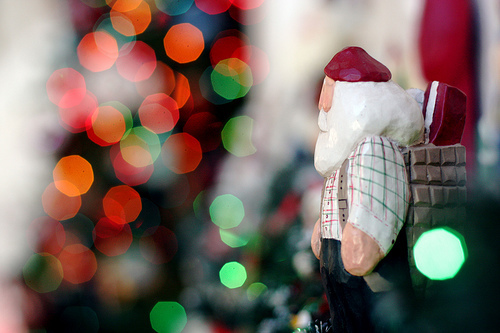
(Photo: Kevin Dooley)
Just for fun, I asked my start-ups (and a few friends) if they'd like to offer y'all a little something special from the holidays. Here's an incomplete list.
Many are working on top-secret stuff and couldn't jump in, but a few were game on last-minute notice, so here you go!
They are listed in alphabetical order by company/name:
Stop being a Wantrepreneur; start taking action. Free vids! Get here: http://appsumo.com/wantrepreneurs-videos/ via @AppSumo
Everything you need to transform. Free trainers, complete nutrition plans, & top-selling supplements. Save 10%! www.Bodybuilding.com/Save10
Photo + Film + Design + Software. Use coupon "tim2011″ for 25% off ANY single @creativeLIVE course til 1/1/12 http://creativelive.com
Email joseph-at-crowdflower.com and we'll give you free CrowdFlower credits and a free crowdsourcing consultation to get you started on our self-service platform.
Foodzie's Tasting Club delivers a monthly selection of artisan food products. Gift it and receive a FREE month on your own subscription. Valid through 12/24.
Ed Cooke trained Josh Foer to be US memory champ in 1 yr. He'll train you if you can learn 500+ words in a week on http://www.memrise.com
Create a free and private website for your family photos this holiday season on Posterous Spaces.
Want a virtual assistant? Get one, FREE, for a year. (From Ramit Sethi of iwillteachyoutoberich.) http://bit.ly/uVjY3M
45% off a year of Reputation.com's MyPrivacy service ($55 for a year) to protect your digital personal information. You can use this link http://www.reputation.com?code=4HOUR to get the discount automatically or enter the code 4HOUR in the gift code section on our site when buying.
Have a Productive New Year for 50% off – Sign up for @RescueTime for $36/year! – http://bit.ly/RT36Y
3 months free – Shopify Unlimited Plan, first 100 to use the promo code '4HOUR' [value $537]
Happy holidays!
###
Odds and Ends: The 4-Hour Chef is now up on Amazon.co.uk







December 19, 2011
Foundation: Kevin Rose and Tim Ferriss
Kevin Rose and I go deep on a few subjects in this longer-format episode of "Foundation," on which he's interviewed many of my favorite entrepreneurs and investors, including Jack Dorsey (Twitter, Square) and Chris Sacca (Lowercase Capital), among others.
I had a great time, as should be clear from the wine and laughter. It's quite different from The Random Show and more of a Larry King-like format… but with more cursing.
Hope you enjoy!
December 18, 2011
How to "Age" Your Wine 5 Years in 20 Seconds: Hyperdecanting
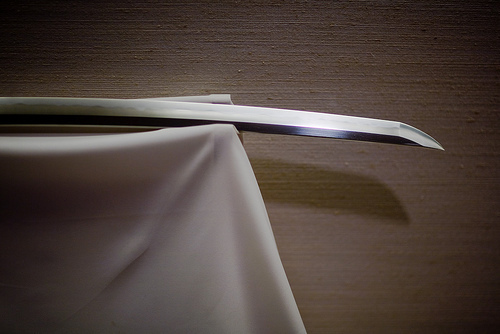
(Photo credit: Oandu)
Wine tends to attract a lot of snobs who use bad French to ruin things.
Done at the dinner table, a brutal technique called "hyperdecanting" will appall that muppet with the popped collar on his polo shirt. It will also make your wine delicious, and make you a hero to everyone who wants to punch him in his smug little face. [cue 0:24]
On a practical level, you can outgun most faux-sommeliers (see what I did there?) with a little brute force. To do this, you first need to understand a bit about aeration.
When in Rome
Generally speaking, letting your wine "breathe" makes it taste better. Just like in our gluten-free kitten pancakes (see pg. 147*), a little air goes a long way…
Letting wine "breathe" equals increasing the surface area of the wine exposed to air for a set period of time. In wine-speak, this "opens the bouquet" (releases aroma compounds) and "softens" the flavor. In simple terms, it usually makes it taste better. Though the mechanism is debated, it appears to reduce the cotton-mouth effects of tannins, which makes aeration perfectly suited to "big" red wines like Cabernet Sauvignon and Bordeaux. In another context, tannins are what make your mouth feel puckered and chalky if you drink overbrewed black tea. Aeration may also minimize wine defects like mercaptins, not to be confused with midichlorians.
Enough with the details, Ferriss. How do I aerate?
We'll look at four methods: swirling and swishing, decanting, using a Vinturi, and beating the sh*t out of it. I'll explain how to use them first, and there is a demo video at the end.
Method 1: Swirling and Swishing
This is the standard tabletop move. To avoid making an ass of yourself: Hold the glass by the stem, keeping the glass base on the table, and move it in fast but small circles. Take a small sip, hold the wine in your mouth as you tilt your head forward, and suck in a thin stream of air, almost as if you're gargling upside down. Swallow and make a mmm-like sound to indicate deep thought.
Slap yourself if you do this while your friends are drinking Coronas.
Method 2: Decanting
Decanting is, strictly speaking, transferring liquid from one container to another. The Romans pioneered the use of glass decanters, which they used to remove sediment, leaving the gunk in the original storage vessel.
Decanters with wide bases are now used to expose wine to air, often for 1–2 hours or more.
Method 3: The Vinturi and Wordplay
The Vinturi® wine aerator is a handheld plastic device that capitalizes on Bernoulli's Principle. Mr. B's rule dictates—in simple terms—that as you increase the speed of a fluid's movement, you decrease its pressure. Decrease the pressure of wine and it becomes easier to infuse more air in less time.
If you pour wine from the bottle, through the Vinturi, and directly into a friend's wineglass, you will hear the accelerated siphoning of air into the stream, which also has a nice party-trick effect. Bingo: Mr. Science–style aeration and a nice shortcut.
The difference is subtle, but it makes for less waiting and less cleanup than traditional decanting.
Method 4: Beat the Sh*t Out of It
This method is not subtle. It's a scientifically well-founded middle finger pointed at people who give a wonderful beverage a bad name.
I owe a hat tip to the brilliant Nathan Myhrvold, former CTO of Microsoft, master French chef, and creator of the iconic, never-to-be-outdone, $600 (or $450 here) cooking encyclopedia, Modernist Cuisine.
If aeration is exposing more liquid surface area to air, how can we take this to its logical extreme?
Blend it into a fury, of course. Nathan has done this with vintage wine gifted to him by Spanish royalty, but I'd suggest a practice run on something from Trader Joe's first. Here's how I do it:
- Pour 1–2 glasses of the wine into a large mixing bowl or—my favorite—a large Bomex beaker. If you're using the latter, 600 ml of wine is perfect for the next step; just leave plenty of room at the top (I fill to around 400 ml). Take a sip for a good sense of "before."
- Lower an immersion blender, also called a "stick" blender, into the glass, then blend for 20–30 seconds. Tip your container (or tilt the blender best you can) to enhance the foaming effect. If you have a standing blender like a Vitamix, feel free to go nuts.
The wine should now have a nice heady froth on it, like a proper Guinness. Pour into a serving cup—I favor a 250-ml Bomex, which is exactly one-third of a standard bottle of wine—and enjoy. It should taste markedly different. And, ladies and gents, that is how you achieve 3 hours of decanting, sans fancy descriptors, in 20–30 seconds. Wink at your most offended guest and ask them if they arm wrestle.
Thank you, Mr. Myhrvold.
(*P.S. The gluten-free kitten pancakes are a joke.)
—
The above is one of hundreds of shortcuts from The 4-Hour Chef: The Simple Path to Cooking Like a Pro, Learning Anything, and Living the Good Life, available here at 50-80% off before the holidays.
###
Odds and Ends: Kindle Fire Winners!
The following 50 people shall receive the free Kindle Fire devices, unless they didn't send us their mailing addresses. All of the below have received emails about the giveaway, so if you didn't get an email and are reading this… not to worry. We'll have more fun coming. Happy holidays!
Dane Davenport
James Proud
Paul Pichugin
Andrew Acker
Jeff Mcdowell
Alex Rosenblum
Colton Day
Carol Nicola
Jared M Johnson
Frank Smith
Tamara Regan
Erik Svensson
Pius Uzamere II
David Ngan
Murray Hoggett
Peter Alicea
Jeni Friedland
Josh Webb
Jeffrey Gray
Luis Congdon
Joseph Haddon
Jason Jacobs
Nathan Crenshaw
Peter Bienkowski
Elizabeth Deuermeyer
Chris Roemmich
Damon Harlan
Brian Valentin
Alex Goetz
Jonathan Heston
Anthony Tanjoco
Rob LaBonne
Josh Cooper
Eric Barry
Matt McGuffin
Kevin Goulet
Alex Smith
Duane Elgan
Katie Spears
Aaron Relph
Christopher Tysh
Justine Hanlon
Andrea Magee
William Hertling
Erik Svensson
Erik Emsley
Steven MacCormack
Tom Harvey
Ship times may vary, but I'm doing my best to get all of them to you by X-mas. Best not to count on it, but I'm double-checking again tomorrow.




















